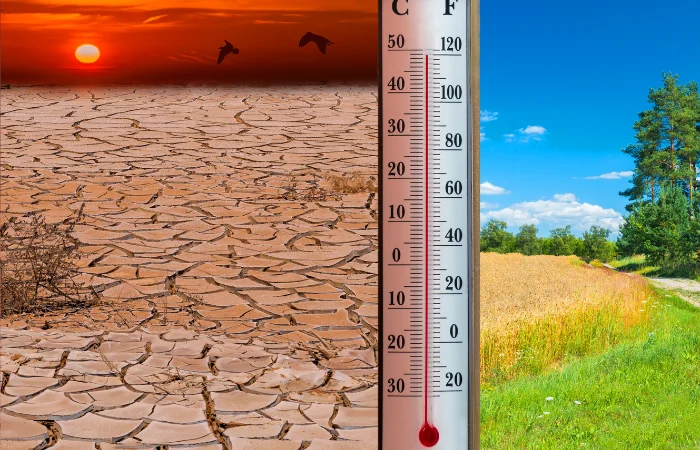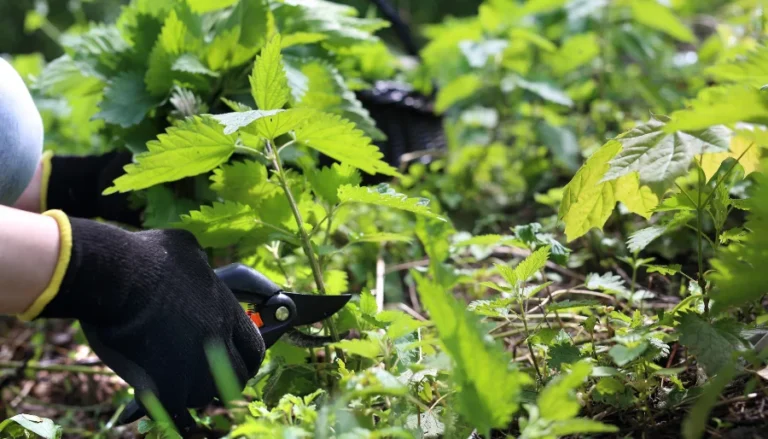While much attention has been given to the rising temperatures of our planet’s atmosphere and oceans, an often overlooked aspect of climate change is now sending alarm bells ringing: the increasing temperature of the Earth’s soil.
A recent research paper highlights how the scientific community has traditionally underestimated the threat posed by increasing soil temperatures in favor of a focus on air and water temperature increases.
One reason for this oversight may stem from the difficulties in reliably measuring soil temperatures compared to the ease of gauging air temperatures.
This fresh perspective comes from a comprehensive study conducted by a group of German scientists who collected soil temperature data from an extensive array of sources, ranging from meteorological stations to remote-sensing satellites and Earth-system model simulations.
To determine the intensity of heat extremes, the research team utilized the TX7d index. This index averages daily peak temperatures during the warmest week each year. Their investigation encompassed both the uppermost layer of soil, approximately 3.9 inches deep, and the air up to 6.5 feet above the ground. Their data spanned from 1996 to 2021 across 118 European weather stations, resulting in 160 sets of air and soil temperature comparisons.
Intriguingly, the data revealed that at two-thirds of the sites analyzed, the soil exhibited a more pronounced trend in heat extremes than the air above it.
Almudena García-García, a co-author of the study from the Helmholtz Centre for Environmental Research (UFZ), pointed out, “Heat extremes in the soil are increasing at a much faster rate than in the air.”
This alarming trend was particularly evident in Central European regions, especially Germany, Italy, and southern France.
The study indicates that in these locations, soil temperature extremes are surging by 0.7 degrees Celsius per decade more swiftly than air temperatures.
The research also delved into the frequency of these soil heat extremes, using the TX90p index, which reflects the proportion of days in a month that reach certain high-temperature thresholds.
García-García stated, “If we currently observe high temperatures in both soil and air on 10% of the days in a given month, a decade later, the air would show high temperatures on 15% of the days, while the soil would register high temperatures on 20%.”
A significant driving factor behind these alarming findings is soil moisture, which plays a crucial role in dictating the heat exchange between the soil and the air. Importantly, the soil’s moisture content is greatly influenced by land cover, shedding light on how human land-use practices might exacerbate the situation.
Forests, for instance, help maintain soil moisture through reduced evaporation, thanks to their canopy cover. Moreover, the deep roots of trees can access water from further below the ground. Conversely, open areas like grasslands or farms usually only benefit from surface-level soil moisture.
Beyond impacting soil-dwelling microorganisms and the ecosystems they sustain; the escalating soil heat extremes have broader repercussions. For example, warmer soil could release more heat and carbon into the lower atmosphere, which could intensify atmospheric warming.
Jian Peng, the head of the UFZ Remote Sensing Department and co-author of the study, emphasizes the significance of their findings. He notes, “The dynamic interplay between soil moisture and temperature can amplify heat episodes in certain areas. Given our findings, previous studies on heat extremes that primarily focused on air temperatures while neglecting soil temperature extremes may need to be revisited.”
Looking Ahead: What Warming Soils Mean for Our Future In 7 Points
The increasing heat below our feet may seem like a distant or abstract concern, but the warming of our planet’s soils holds tangible implications for our everyday lives, the ecosystems we rely upon, and the future health of our planet.
1. Impacts on Agriculture
Soil is the lifeblood of agriculture. As soil temperatures rise, it directly affects plant growth, nutrient absorption, and water uptake. This could lead to reduced crop yields and potentially higher prices for staple foods. Additionally, as the soil dries out, farmers may need to increase irrigation, putting further strain on already limited freshwater resources.
2. Changing Ecosystems
The microorganisms that reside in the soil play a critical role in nutrient cycling and organic matter decomposition. A change in their environment can disrupt these processes, which in turn can affect plant growth and health. Moreover, soil-dwelling organisms, from bacteria to earthworms, are foundational to food webs. Changes at this level could ripple up, affecting everything from the birds in our backyards to the mammals in our forests.
3. Amplified Heatwaves
With soil retaining more heat, the intensity and frequency of heatwaves might increase. This not only affects ecosystems but also has direct implications for human health. Prolonged and intense heatwaves can lead to health problems, especially for vulnerable populations like the elderly and children.
4. Carbon Release
Warmer soils can accelerate the decomposition of organic matter, potentially releasing more carbon dioxide into the atmosphere. This creates a feedback loop: as more carbon is released, it can further intensify global warming, which then warms the soils even more.
5. Urban Planning and Infrastructure
Cities and towns might have to reconsider urban planning. For instance, warmer soils can affect the foundation of buildings and the integrity of roads. Furthermore, as soil moisture decreases, it can lead to subsidence in certain areas, making the ground sink and potentially damaging infrastructure.
6. Adapting Land Use
The findings underline the importance of sustainable land use. Deforestation and poor agricultural practices can exacerbate soil warming. On the bright side, this also means that through reforestation, agroforestry, and sustainable farming, we have the tools to mitigate some of these impacts.
7. Water Resource Management
As mentioned, soil moisture is crucial in determining heat exchange between the soil and the air. As soils dry out, regions may experience reduced water availability, affecting everything from household use to larger-scale agricultural operations.
In essence, the rising temperatures of the Earth’s soil intertwine with many aspects of our lives, from the food we eat to the homes we live in. It’s a stark reminder that climate change doesn’t only manifest in fierce storms or melting ice caps – it’s also in the subtle, slow warming of the ground beneath our feet.
More To Discover
- Suing for Survival: Legal Battle to Prevent the Great Salt Lake from Turning to Toxic Dust
- UN Report Reveals World Falling Drastically Short on Climate Goals, Warns of Looming Catastrophe
- Science Found The Sweet Spot: 68°F, The Optimal Temperature for Life on Earth
- Mysterious Deaths of Magellanic Penguins Plague South America’s Shores
As we continue to research and understand these changes, it becomes evident that proactive measures, both large and small, will be essential in safeguarding our planet’s future.
Source: Nature Climate Change




















